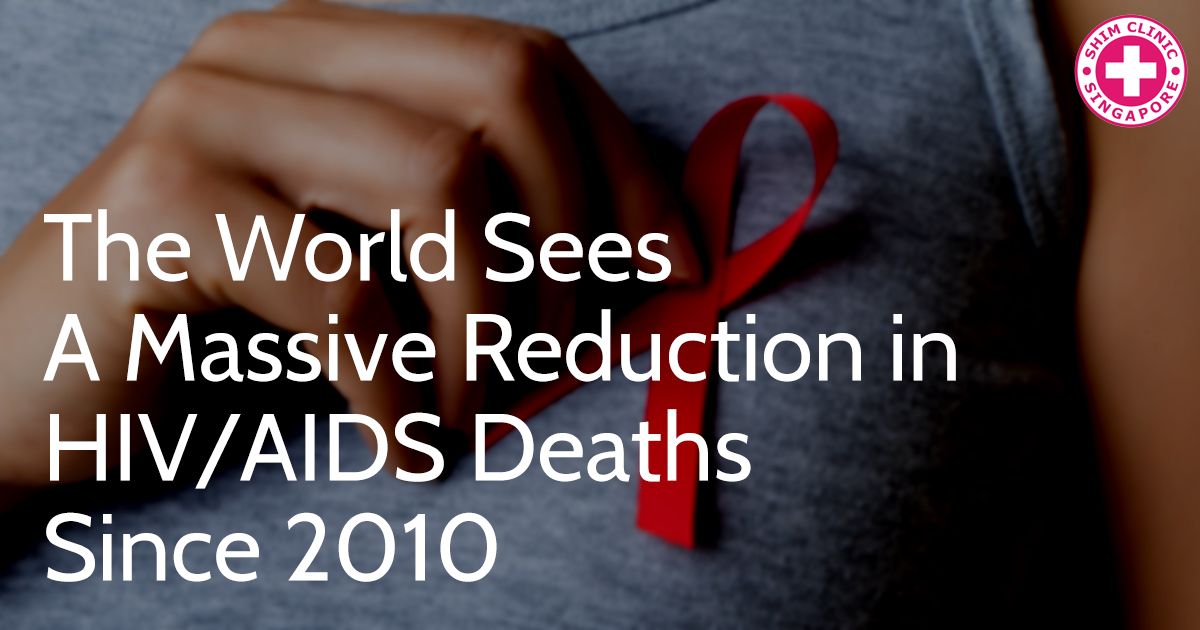One of the world’s deadliest killers in the 80s and the 90s, HIV has had its status change significantly in the past decade. Scientific advances and a much better understanding of the HIV/AIDS mechanisms have enabled medical researchers to develop reliable preventative treatments and therapies for HIV-positive individuals.
All of the work of the scientific community has finally paid off. The latest research suggests that the massive threat posed by HIV may soon become a thing of the past.
While certain parts of the world are still experiencing problems due to difficult access to testing and treatment, the overall global trend is a positive one.
A Paramount Reduction in HIV Deaths
Since 2010, the world has seen a reduction in the number of HIV/AIDS deaths by a third.
According to a new UNAIDS and United Nations report, there were 770,000 HIV and AIDS-related deaths across the world in 2018. This number is 33 per cent lower than the number of AIDS-related deaths registered eight years ago.
Needless to say, progress varies across different parts of the world. While the situation has improved significantly in many areas, some regions still lag behind.
Some Troubling New Developments
Apart from mentioning great advances in terms of reducing the number of HIV/AIDS deaths, the report also paints a somewhat troubling picture for specific parts of the world.
While the number of deaths has gone down, the number of new HIV infections has increased. Key populations account for more than 50 per cent of the new infections. These populations include men who have sex with men, drug users, sex workers and prisoners.
In Eastern Europe and Central Asia, 41 per cent of the new infections were attributed to people using intravenous drugs.
The region most severely affected by HIV is Southern Africa. Central Asia is another trouble area due to the fact that the number of new HIV infections has gone up 29 per cent since 2010.
North Africa and the Middle East are two other problem areas that have seen an increase in the number of HIV infections since 2010.
As per the UNAIDS report, 37.9 million people across the globe live with the human immunodeficiency virus today. The good news is that 23.3 million of these people have access to some kind of antiretroviral therapy – an essential for keeping the infection under control and reducing the viral load.
New Therapies Bring Hope
While the report highlights both positive and negative trends, it also sounds optimistic for the future due to the latest medical advances in the fields of HIV prevention and treatment.
UNAIDS reports that two of the most important developments since 2010 have been HIV PEP and HIV PrEP. Pre-exposure and post-exposure prophylaxis both consist of the administration of medications. Such therapies are advised to high risk individuals and they reduce the risk of becoming infected by more than 90 per cent.
Statistics show that 300,000 people across the world used HIV PrEP in 2018. This type of treatment is most popular in the US – the country that accounts for 130,000 individuals getting pre-exposure prophylaxis.
The report also notes that medical researchers are continuously putting effort in the development of an AIDS cure.
Earlier this year, reports surfaced about the second person in the world that saw elimination of their viral load. In addition, several HIV vaccine human studies have either been launched or they will be initiated in the near future. Such developments show that the medical community has been massively successful in its quest to control and eventually eliminate HIV.
Singapore’s HIV Statistics
In 2018, Singapore witnessed 313 new HIV infections, the Ministry of Health reported. These new cases bring the total number of people living with HIV/AIDS in Singapore to 8,295 people.
Singapore has seen a reduction in the number of new HIV infections. Over previous years, this number reached 400 to 500 new cases.
Of the new HIV-positive individuals, 93 per cent are male. Looking further into the data, 62 per cent of these men belong to the 20 to 49 age group. Unfortunately, nearly 50 per cent of them already developed a late stage HIV infection by the time they got tested.
Sexual intercourse is the primary method of infection spread in Singapore – it accounts for 95 per cent of the new cases. Heterosexual transmission occurred in 43 per cent of all cases, followed by homosexual transmission (42 per cent) and bisexual transmission (10 per cent).
Most of the new cases were discovered during medical screening for symptoms resulting for the late stage of the HIV infection. Only 22 per cent of the HIV-positive individuals went to get HIV screening at a STD clinic.
HIV testing is readily available in Singapore and it provides reliable information about one’s status. Since treatment options exist already, it’s essential to know about one’s HIV-positive status as soon as possible.
Shim Clinic offers HIV tests that produce rapid results, as well as medical consulting. The clinic also makes HIV PEP and HIV PrEP readily available to address the needs of high risk individuals. Don’t hesitate to visit Shim Clinic or contact us online to learn more about HIV prevention, testing and treatments.


Pingback: Extraction of HIV Genetic Code Provides Information about Virus Emergence